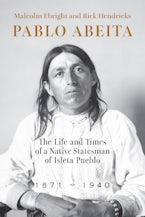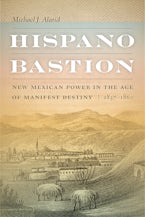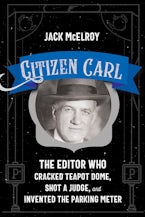- Home
- biography & autobiography
- history
- Pablo Abeita
Pablo Abeita
The Life and Times of a Native Statesman of Isleta Pueblo, 1871–1940
by Malcolm Ebright and Rick Hendricks
Published by: University of New Mexico Press
This is the first biography of a Pueblo leader, Pablo Abeita, a man considered the most important Native leader in the Southwest in his day. Abeita was a strong advocate for Isleta and the other eighteen New Mexico pueblos during the periods of assimilation, boarding schools, and the reform of US Indian policy. Working with some of the most progressive Indian agents in New Mexico, with other Pueblo leaders, and with advocacy groups, he received funding for much-needed projects, such as a bridge across the Rio Grande at Isleta. To achieve these ends, Abeita testified before Congress and was said to have met, and in some cases befriended, nearly every US president from Benjamin Harrison to Franklin D. Roosevelt.
Abeita dealt with many issues that are still relevant today, including reform of US Indian policy, boarding schools, and Pueblo sovereignty. Pablo Abeita's story is one of a people still living on their ancestral homelands, struggling to protect their land and water, and ultimately thriving as a modern pueblo.
Malcolm Ebright is a historian, an attorney, and the director of the Center for Land Grant Studies. His books include Advocates for the Oppressed: Hispanos, Indians, Genízaros, and Their Land in New Mexico; The Witches of Abiquiu: The Governor, the Priest, the Genízaro Indians, and the Devil; Four Square Leagues: Pueblo Indian Land in New Mexico; and Pueblo Sovereignty: Indian Land and Water in New Mexico and Texas.
Rick Hendricks is an historical consultant to the Rio Grande Historical Collections at New Mexico State University. He is also the author of The Navajos in 1705 and was an editor of the six-volume Vargas Project (both UNM Press).
"A unique contribution to Native Studies as well as to expanding the general studies on the histories of New Mexico and Indian policy. It is particularly important to students and readers interested in Pueblo Indian history who are interested in a more contemporary context. The era of Pablo Abeita's lifetime was one of tremendous change and challenge to Pueblo lifeways. His evolution as a Native statesman adds needed context to an otherwise white-centric presentation of local history."--Theodore Jojola, Director of the University of New Mexico's Indigenous Design and Planning Institute
Acknowledgments
A Note on Usage
Introduction
Chapter One. Pablo Abeita: An Overview of His Life and Times
Chapter Two. Pablo Abeita and Charles F. Lummis
Chapter Three. Photography at Isleta Pueblo: The 1912 D. W. Griffith Movie and the Wanamaker Expedition of 1913
Chapter Four. Abeita and Father Ketcham: The Bridges over the Rio Grande
Chapter Five. Pablo Abeita in the Pueblo
Chapter Six. Pablo Abeita and the Railroad
Chapter Seven. Pablo Abeita and Indian Education
Chapter Eight. Pablo Abeita and the Court of Indian Offenses
Chapter Nine. Pablo Abeita as Advocate for the Pueblos
Chapter Ten. Pablo Abeita's Quest for the Crest
Appendix One. Indian Agents and Superintendents in New Mexico
Appendix Two. Commissioners of Indian Affairs
Appendix Three. Isleta Pueblo Governors
Appendix Four. Pablo Abeita Marriage Record
Appendix Five. Pablo Abeita Genealogy
Appendix Six. Pablo Abeita's Letters
Appendix Seven. Cases in Judge Abeita's Court of Indian Offenses
List of Abbreviations
Glossary
Notes
Bibliography
Index










